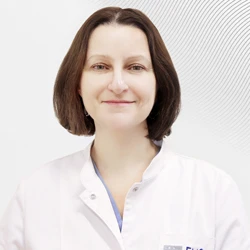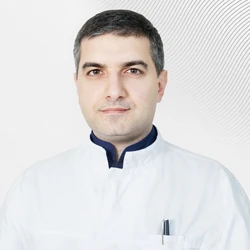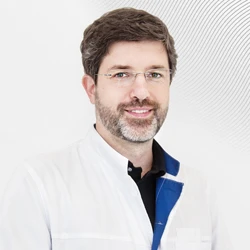A child's movements are a way for him to communicate with his mother and with the outside world. In moments of excitement or joy, a woman often feels a more active baby stirring.
The movements of a baby are not only an indicator of its condition, but also the unique sensations that a mother experiences during this happy period of her life, during pregnancy.
You've known for a long time that you're pregnant, and you're talking to your baby mentally, or maybe even out loud, but most moms can only really feel that the dearest person in the world lives inside you after the first thrusts.
1. When the baby starts to move
Normally, the baby begins to move from the 8th week of pregnancy, when arms and legs appear. It's just that his size is so small and his strokes are so weak that Mom doesn't feel it. The first noticeable movement of the baby for a woman, as a rule, appears at 20-22 weeks of pregnancy, when the baby's spinal cord and brain are formed, and its movements become regular. If a woman has already given birth, then the muscles of the uterus are more stretched and the tremors can be felt earlier – starting at 16-18 weeks. In addition, she is already familiar with these feelings and can recognize them faster.
Expectant mothers describe the baby's first tremors in different ways: someone compares them to the fluttering of a butterfly, someone feels undulating movements, pulsation, slight tickling or bubbling in the intestines. As the baby grows, his movements become more recognizable. By 24 weeks of pregnancy, they are already beginning to resemble the movements of a newborn. It is from this age that the baby communicates with her mother in the language of movements and reacts sensitively to changes in her emotional state with her movements: when her mother is nervous, worried, or, conversely, rejoices and laughs, the baby can move more actively or calm down for a while.
The baby moves most actively in the mother's stomach during the period from 24 to 32 weeks of pregnancy. By the time of delivery, the motor activity of the baby decreases slightly, as it becomes cramped in the uterus.
The obstetrician-gynecologist will tell you how to count the number of movements of the baby, and what number is considered normal. If you notice any deviations from these indications, tell your doctor. Most likely, you will have to undergo additional examinations - listening to heart tones, ultrasound or cardiotocography.
2. When not to worry
- it's too early. Some pregnant women start to panic when they don't feel any movement inside themselves at 20 weeks. If the last ultrasound scan did not reveal any abnormalities, there is no reason to worry. Wait: the baby can make itself felt at both 23 and 24 weeks. Some women, especially those expecting their first child, may only recognize the movements at 25 weeks, as they simply do not attach importance to a slight flutter or gurgling in their stomach. And you should really listen to the movement from the 30th week of pregnancy.
- baby is asleep. It's not surprising that you don't feel fluttering inside your stomach all the time. The baby, like you, has his own rest regime. It can subside for 3-4 hours, and then make itself felt. And don't forget that all babies are different - some are active, others behave more calmly in their mother's tummy. If your stomach is growing, and the obstetrician-gynecologist hears the baby's heartbeat during the examination, it means that the baby is growing and developing.
- just like mom. If the expectant mother leads an active lifestyle, works or plays sports, the child often adjusts to this rhythm, which is why his tremors go unnoticed. Lie down and relax. You'll see, the baby will immediately start kicking.
At the age of 4-5 months, there are days when the baby has not made a single tangible push. In this case, its activity must be stimulated. Eat or drink a glass of milk, then lie down for an hour or two. The child will appreciate the calories offered and the calm state of the mother and, most likely, will start pushing.
Women with pronounced subcutaneous fat subjectively feel fetal movement to a lesser extent than thin women
3. What to pay attention to
- The tremors are too weak. If you used to feel your baby regularly, but now his tremors have become noticeably weaker or have completely stopped, this should alert you. An alarm signal is a complete cessation of physical activity for 12 hours or more. Consult a doctor immediately.
- The tremors are too strong. If the baby is kicking too violently, try to change the position in which you are sitting or lying down – it may be uncomfortable for the baby. If the baby does not stop and causes you severe pain with its sharp and frequent movements, consult a doctor. Previously, it was believed that excessive fetal movement could be a sign of hypoxia, but at the moment this diagnosis can only be made by a doctor. The causes of hypoxia are various diseases that complicate pregnancy (anemia, cardiovascular diseases, diabetes mellitus, fetoplacental insufficiency, Rhesus conflict).
Active movements of the baby may be associated with the uncomfortable position of the mother for the child. It is not recommended to lie on your back for a long time, as large vessels can be squeezed, which leads to impaired blood flow and the child reports increased motor activity. The most comfortable position for mom is lying on her left side.
How to assess the baby's condition?
To assess the vital activity of the fetus, doctors use several methods:
-
stress test or cardiotocography (CTG). This is the most objective and informative method for assessing the condition of a growing baby. As planned, it is performed at the 34th week of pregnancy, but if necessary, it can be performed earlier. With a normal pregnancy, the study is performed once a week. CTG is a recording of fetal heart rate using a fetal monitor device. To perform the test, an ultrasound sensor is attached to the woman's abdomen, and the baby's heartbeat is recorded on a paper tape for 30 minutes, after which the resulting curve is evaluated. The baby's condition is determined by the frequency and rhythm of heart contractions and changes in heartbeat depending on the movements. Unfavorable signs are: the absence of a heartbeat response or its decrease in response to the fetus' own movements, a monotonous rhythm and a decrease in the heart rate below 110 beats per minute.
-
If CTG receives a low score, then a fetal biophysical profile (BFP), including ultrasound and CTG, can be used to determine the child's condition in more detail starting from the 3rd trimester. The following parameters are evaluated: cardiac activity, respiratory movements of the chest, muscle tone and the amount of amniotic fluid. All this allows us to draw a conclusion about the reasons for the decrease in the baby's movements. If a state of severe hypoxia is established, an emergency caesarean section is performed. If there is no threat to the child's life, then follow-up and repeated stress tests are continued.
Pearson's Fetal Movement Test "Count to Ten"
Starting from the 28th week of pregnancy, mark the number of noticeable movements of the baby on a special card every day. Start counting at 9 a.m. and finish at 9 p.m. During these 12 hours, the baby should push you at least 10 times. It is this number of movements per day that is considered normal. You enter the time of the 10th movement into the card. A small number of tremors - less than 10 per day - may indicate fetal oxygen deficiency and is a reason to consult a doctor.
Was this information helpful?
Questions and answers
Lump in my breast
I have noted the lump in my breast periodically appeared following breastfeeding my first child (as a result of plugged duct). I did an ultrasound, but it revealed nothing, as if everything was normal. I knead my breast periodically and feel pain at those moments. Now I am pregnant, due date is on 20th. What should I
do?? When to examine my breasts, is it possible to perform the examination during pregnancy and lactation?
...more The "lump" in the breast cannot occur after feeding, even if it was the plugged duct. You should not "knead" the breasts. If there is a problem or even if you think it is – the breast should be examined. Pregnancy and breastfeeding are not contraindications for this. Under normal conditions for pregnant women we
recommend a breast examination during 1 and 3 trimester (before childbirth). There are no contraindications for breast examination in your case. You are welcome at any convenient time for examination and advice on breastfeeding.
...more
Benign disease
I have a benign lump in one breast size of 12.0*9.9 mm. Puncture or a biopsy will be done next week. I was told by mammologist that surgery is needed. As far as I know, concerning the surgery, axillary lymph nodes are to be removed together with the tumor. I also know that in Europe lymph nodes are testes for
specific markers and only affected ones should be removed; if lymph nodes are no affected, they are not to be dissected and the surgery is minimally invasive. So what is your approach? Does it make sense to do it or you have the same methods and the same equipment?
...more If histological examination of the sample reveals fibroadenoma of basic type or tissue hyperplasia without atypia, or nodular type fibrocystic condition of the breast tissue, the question of surgical treatment should not arise. If biopsy reveals giant fibroadenoma sectoral resection is indicated, i.e. mass excision
within the healthy tissues and lymph nodes will be removed. In case of non- benign histological result, i.e. carcinoma is detected, subsequent immunohistochemical examination is required as well as a clinical oncologist and surgeon consultation; and the decision on complex treatment will be taken by case management team. With regard to the diagnosis and treatment methods in our center, each case is addressed individually. Sometimes we remove a benign area (for example, the area of hyperplasia with atypia) using the vacuum-needle technique through 3-4 mm incision. As for the surgical procedure protocols for benign breast tumors, benign simple fibroadenoma is not removed in America, Europe, Israel, etc. I would like to discuss your case with you in more details and perform some additional tests if needed, so I would be glad to see you at EMC’s Breast center.
...more
Melanoma
My mom had a mole (suspected for melanoma) removed in November 2015. Histology revealed lentigo melanoma in situ. We checked the slides back in the Netherlands, and the diagnosis was a superficial spreading melanoma of Clark 3 Т1а Beslow 0,8 stage; re-excision with capture of 1 cm of healthy skin is recommended. Is
it possible to make re-excision and subsequent histology in your hospital? If so, how soon?
...more We absolutely agree with the opinion of the European colleagues: re-excision with a wider offset is required; according to the Russian Protocol it is necessary to move 2 cm from the peripheral edge. This is for counter insurance, as lentigo-melanoma is a favorable type, and previous surgery is likely to put an end to
this story and the forecast is favorable. All the necessary manipulations for the study are possible in our Clinic; we have our own well-equipped laboratory with the possibility to ask the advice concerning the sample in Germany and Israel.
You should make an appointment with the surgeon-oncologist (Marina Bissessar) in the nearest time to conduct the diagnostic re-excision. Hope to help!
...more
A spot on the back and chest
I have a spot on the back and chest, what could it be?
A spot on the skin is one of the most common symptoms of various skin diseases. Infectious (viral, bacterial or fungal) as well as noninfectious skin including serious diseases and nevi (moles or birthmarks) can manifest as spots on the skin. You should go to the dermatologist for accurate diagnosis. The doctor will
examine you and, if necessary, a special instrument (Dermatoscope, wood lamp) will be used. A skin scraping can also be done in the lesion for microscopy, cytology or culture. A treatment will be prescribed after diagnosis.
...more 
Batkaeva Nadezhda
07 September 2016
Uterine cancer
My mom was diagnosed with the uterine cancer. She is 68 years of age and has an obesity of 4th grade (the growth of 166 cm, weight 135 kg) and hypertension. Admission to the radiology department was recommended. What should we do? As far as I know the surgery is the only method for cancer of the uterus to be removed.
Is it really so that this surgery is only possible for young and relatively healthy persons?
...more It is not quite so. We can operate on any patient, but the issue is which complications can lead to patient’s death and which of them can just delay the recovery. From the anesthesiologist’s point of view, it is a major challenge to intubate patients with 4th degree obesity; the abdominal section is also possible,
but there is a 100% risk of suture line disruption and inflammation, let alone the postoperative pneumonia, venous thrombosis, etc. There is another option such as vaginal hysterectomy which is more acceptable and relatively safe in obese patients. It is not a «treatment standard», however, as it allows not obtaining pelvic washings, but still there is a possibility of complete cure. Anesthesia remains a problem - both general and spinal. Radiation therapy without surgery is another acceptable treatment option besides vaginal hysterectomy. A chance of complete cure is still exists, but the survival rate is on average lower than in surgical treatment
...more 
Vladimir Nosov
07 September 2016









.webp)


.webp)

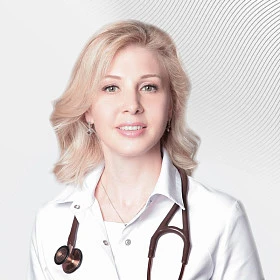
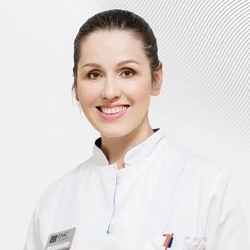
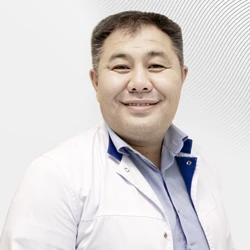
.webp)
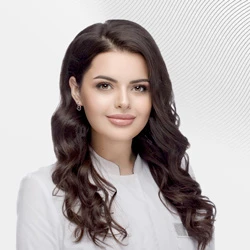
.webp)

